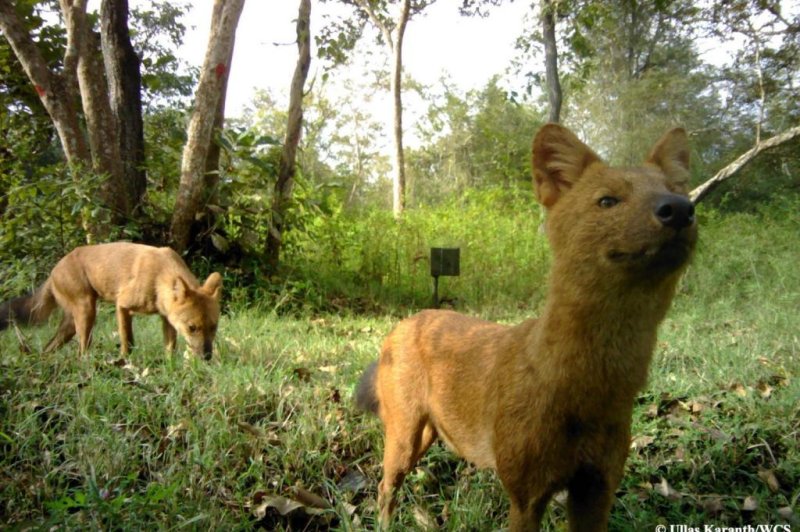A pair of dholes, Asian wild dogs, are seen hunting in India's Western Ghats region. Photo by Ullas Karanth/WCS
Feb. 16 (UPI) -- Large cats and wild dogs don't typically get along. When possible, they keep their distance, operating in their own ecological niches.
But in India, ecologists have found tigers, leopards, and Asian wild dogs, called dholes, successfully coexisting in tight quarters -- all while competing for the same natural resources and prey, including sambar deer, chital and pigs.
To study the secrets of dog-and-cat coexistence, researchers with the Wildlife Conservation Society set up dozens of camera traps in three small reserves in India's Western Ghats region. The film footage allowed scientists to observe predator populations more broadly, instead of tracking individuals over an extended time period.
The researchers found each population used unique strategies to manage coexistence and avoid encroaching upon each other's domains. However, their analysis suggests coexistence strategies are influenced by the abundance of prey in each preserve.
In Bhadra Reserve, where prey is less abundant, periods of predator activity were more likely to overlap. As wild habitat becomes increasingly scarce, understanding how vulnerable species -- tigers and dholes are both officially endangered -- coexist and share space is important to conservation.
"Tigers, leopards, and dholes are doing a delicate dance in these protected areas, and all are manging to survive," lead study author Ullas Karanth, director for science in Asia at WCS, said in a news release. "We were surprised to see how each species has remarkably different adaptations to prey on different prey sizes, use different habitat types and be active at different times. Because of small and isolated nature of these high prey densities in these reserves, such adaptions are helpful for conservationists trying to save all three."
Karanth and his colleagues published their findings in the journal Proceedings of the Royal Society B: Biological Sciences.















